Cultural and creative products displayed in British Museum
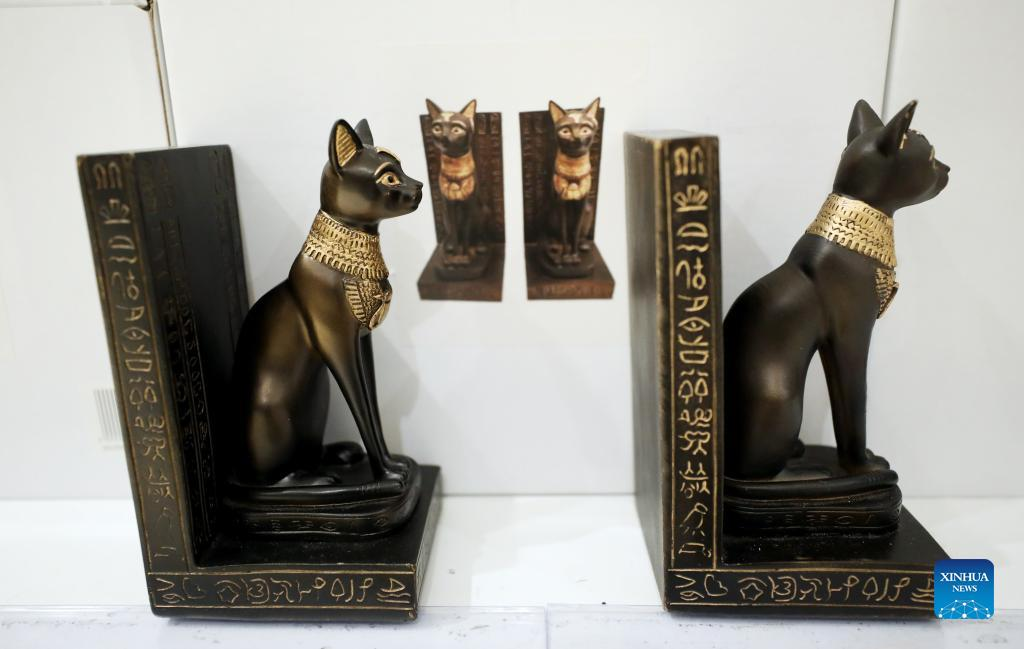
Photo taken on May 11, 2022 shows replicas of the Gayer-Anderson cat in the British Museum in London, Britain. The Gayer-Anderson cat is a bronze figure depicting one form of the goddess Bastet. The cat dates from the Late Period of ancient Egypt around 600 BC. It's named after Major Robert Grenville Gayer-Anderson, who donated the statue to the British Museum in 1939. (Xinhua/Li Ying)
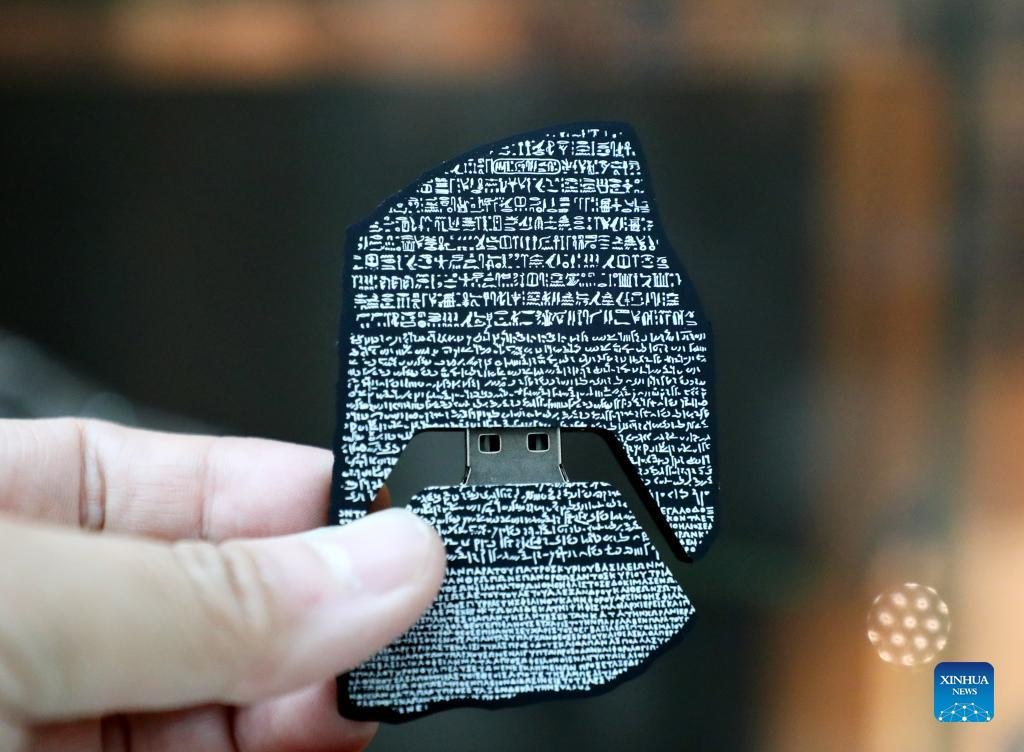
Photo taken on May 11, 2022 shows a Rosetta Stone flash disk in the British Museum in London, Britain. The Rosetta Stone is one of the most famous objects in the British Museum. The Stone is a broken part of a bigger stone slab. It has a message carved into it, written in three types of writing. It was an important clue that helped experts learn to read Egyptian hieroglyphs (a writing system that used pictures as signs). (Xinhua/Li Ying)

Photo taken on May 11, 2022 shows the Lewis Chessmen in the British Museum in London, Britain. The Lewis Chessmen are among the most popular collections in the British Museum. Discovered on the Isle of Lewis of Scotland in 1831, the medieval chess pieces were made of walrus ivory. (Xinhua/Li Ying)

Photo taken on May 11, 2022 shows the Lewis Chessmen postcards in the British Museum in London, Britain. The Lewis Chessmen are among the most popular collections in the British Museum. Discovered on the Isle of Lewis of Scotland in 1831, the medieval chess pieces were made of walrus ivory. (Xinhua/Li Ying)
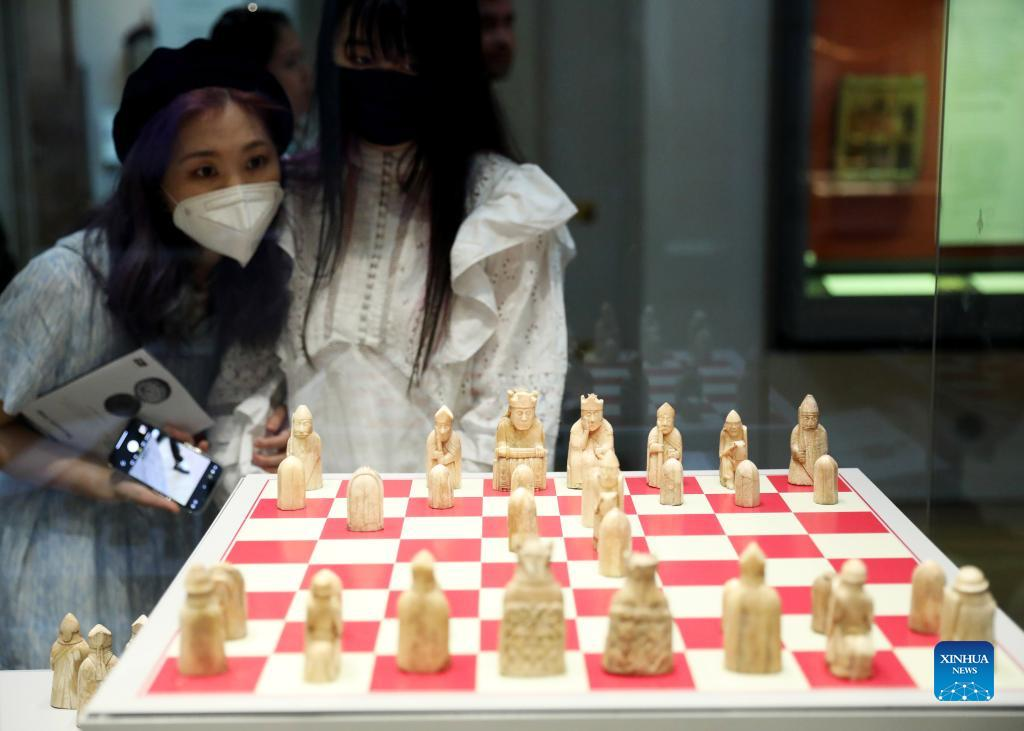
Visitors watch the Lewis Chessmen in the British Museum in London, Britain, on May 11, 2022. The Lewis Chessmen are among the most popular collections in the British Museum. Discovered on the Isle of Lewis of Scotland in 1831, the medieval chess pieces were made of walrus ivory. (Xinhua/Li Ying)

Photo taken on May 11, 2022 shows replicas of the Lewis Chessmen in the British Museum in London, Britain. The Lewis Chessmen are among the most popular collections in the British Museum. Discovered on the Isle of Lewis of Scotland in 1831, the medieval chess pieces were made of walrus ivory. (Xinhua/Li Ying)
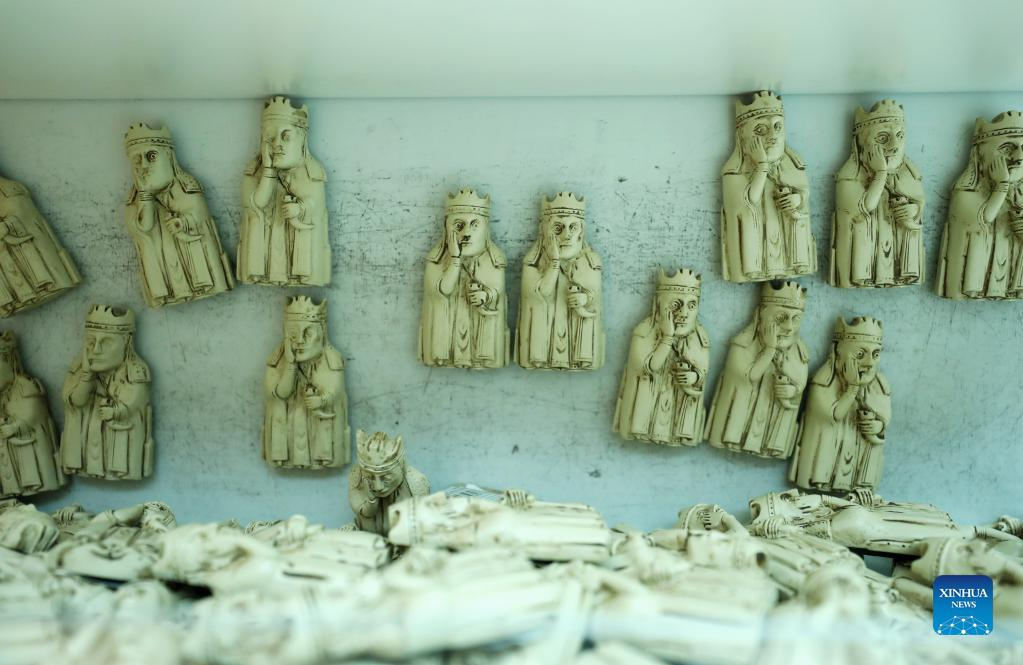
Photo taken on May 11, 2022 shows the Lewis Chessmen magnets in the British Museum in London, Britain. The Lewis Chessmen are among the most popular collections in the British Museum. Discovered on the Isle of Lewis of Scotland in 1831, the medieval chess pieces were made of walrus ivory. (Xinhua/Li Ying)
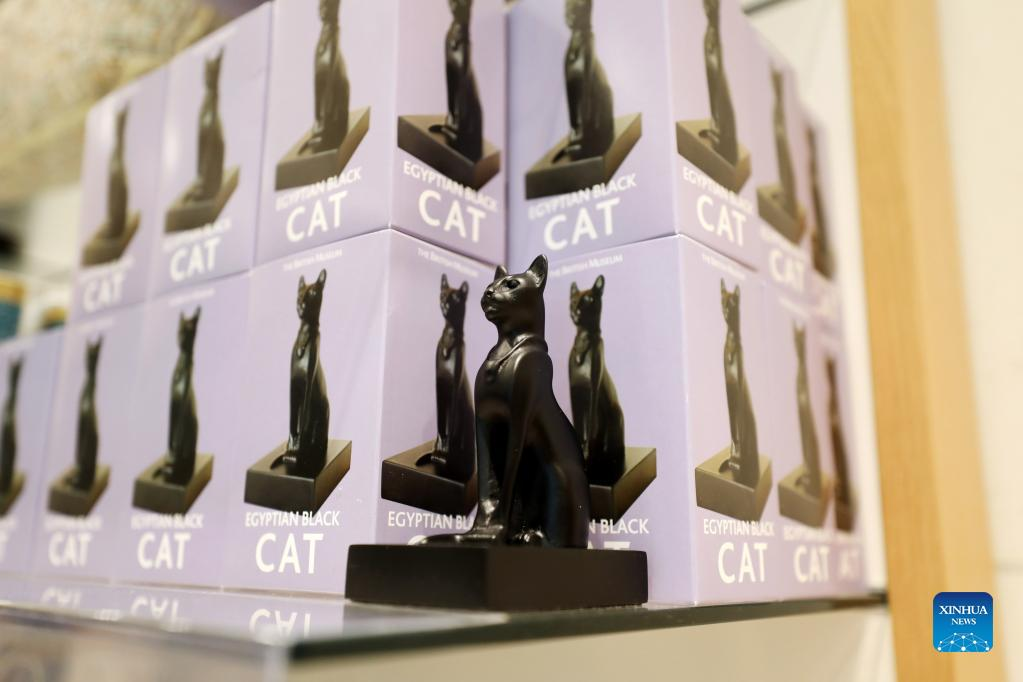
Photo taken on May 11, 2022 shows replicas of the Gayer-Anderson cat in the British Museum in London, Britain. The Gayer-Anderson cat is a bronze figure depicting one form of the goddess Bastet. The cat dates from the Late Period of ancient Egypt around 600 BC. It's named after Major Robert Grenville Gayer-Anderson, who donated the statue to the British Museum in 1939. (Xinhua/Li Ying)

Photo taken on May 11, 2022 shows the Lewis Chessmen in the British Museum in London, Britain. The Lewis Chessmen are among the most popular collections in the British Museum. Discovered on the Isle of Lewis of Scotland in 1831, the medieval chess pieces were made of walrus ivory. (Xinhua/Li Ying)
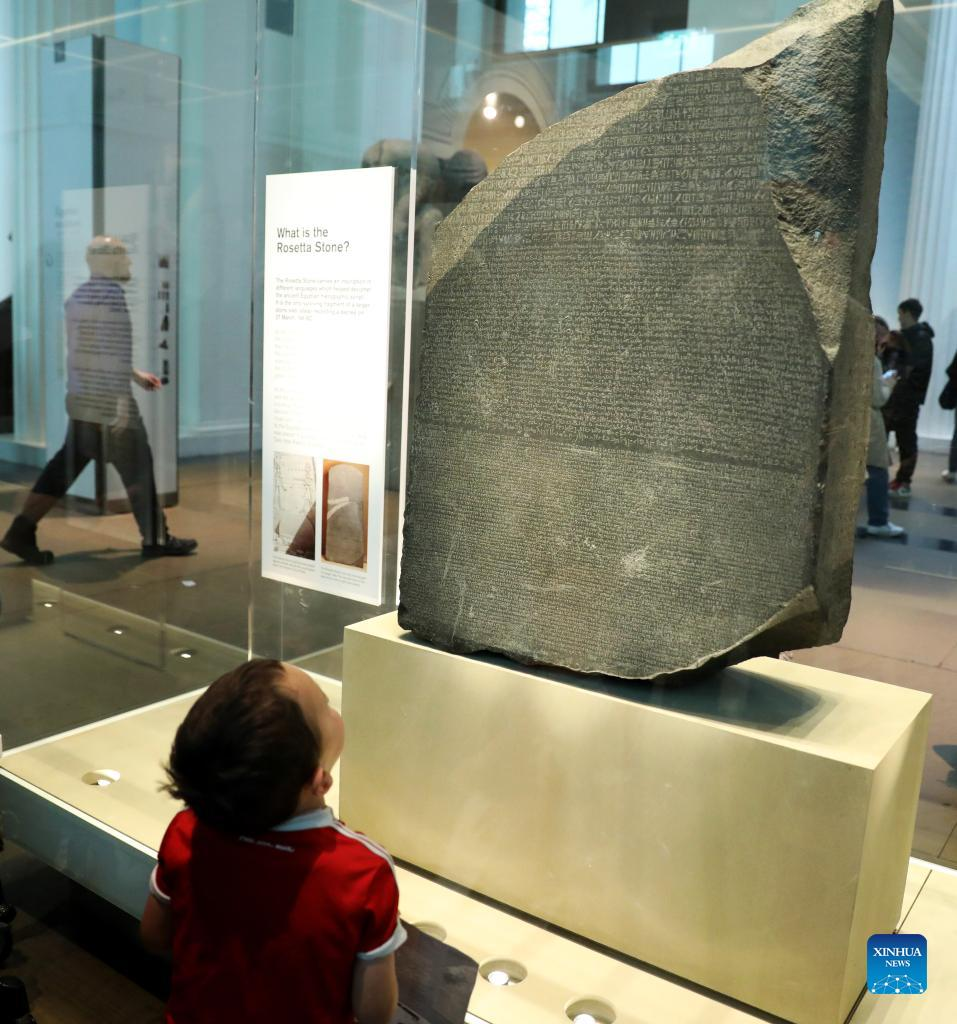
A boy watches the Rosetta Stone in the British Museum in London, Britain, on May 11, 2022. The Rosetta Stone is one of the most famous objects in the British Museum. The Stone is a broken part of a bigger stone slab. It has a message carved into it, written in three types of writing. It was an important clue that helped experts learn to read Egyptian hieroglyphs (a writing system that used pictures as signs). (Xinhua/Li Ying)

Photo taken on May 11, 2022 shows the Gayer-Anderson cat mugs in the British Museum in London, Britain. The Gayer-Anderson cat is a bronze figure depicting one form of the goddess Bastet. The cat dates from the Late Period of ancient Egypt around 600 BC. It's named after Major Robert Grenville Gayer-Anderson, who donated the statue to the British Museum in 1939. (Xinhua/Li Ying)

Photo taken on May 11, 2022 shows replicas of the Lewis Chessmen in the British Museum in London, Britain. The Lewis Chessmen are among the most popular collections in the British Museum. Discovered on the Isle of Lewis of Scotland in 1831, the medieval chess pieces were made of walrus ivory. (Xinhua/Li Ying)

Photo taken on May 11, 2022 shows replicas of the Lewis Chessmen in the British Museum in London, Britain. The Lewis Chessmen are among the most popular collections in the British Museum. Discovered on the Isle of Lewis of Scotland in 1831, the medieval chess pieces were made of walrus ivory. (Xinhua/Li Ying)

Visitors watch the Lewis Chessmen in the British Museum in London, Britain, on May 11, 2022. The Lewis Chessmen are among the most popular collections in the British Museum. Discovered on the Isle of Lewis of Scotland in 1831, the medieval chess pieces were made of walrus ivory. (Xinhua/Li Ying)

Photo taken on May 11, 2022 shows the Lewis Chessmen in the British Museum in London, Britain. The Lewis Chessmen are among the most popular collections in the British Museum. Discovered on the Isle of Lewis of Scotland in 1831, the medieval chess pieces were made of walrus ivory. (Xinhua/Li Ying)
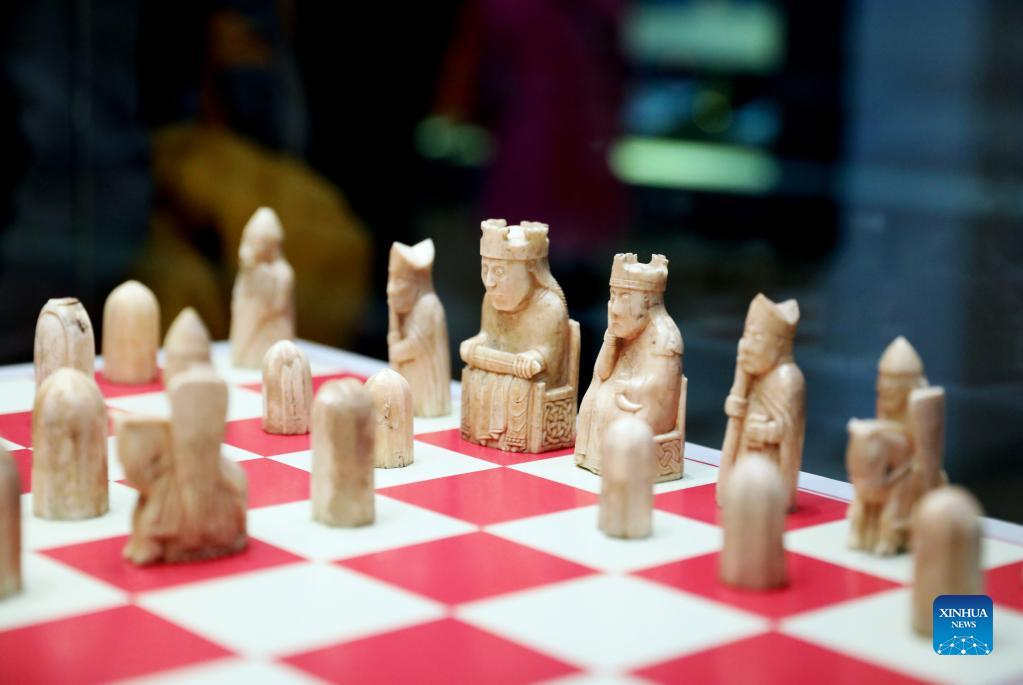
Photo taken on May 11, 2022 shows the Lewis Chessmen in the British Museum in London, Britain. The Lewis Chessmen are among the most popular collections in the British Museum. Discovered on the Isle of Lewis of Scotland in 1831, the medieval chess pieces were made of walrus ivory. (Xinhua/Li Ying)

Photo taken on May 11, 2022 shows replicas of the Lewis Chessmen in the British Museum in London, Britain. The Lewis Chessmen are among the most popular collections in the British Museum. Discovered on the Isle of Lewis of Scotland in 1831, the medieval chess pieces were made of walrus ivory. (Xinhua/Li Ying)

Photo taken on May 11, 2022 shows a replica of the Gayer-Anderson cat in the British Museum in London, Britain. The Gayer-Anderson cat is a bronze figure depicting one form of the goddess Bastet. The cat dates from the Late Period of ancient Egypt around 600 BC. It's named after Major Robert Grenville Gayer-Anderson, who donated the statue to the British Museum in 1939. (Xinhua/Li Ying)

Photo taken on May 11, 2022 shows the Gayer-Anderson cat in the British Museum in London, Britain. The Gayer-Anderson cat is a bronze figure depicting one form of the goddess Bastet. The cat dates from the Late Period of ancient Egypt around 600 BC. It's named after Major Robert Grenville Gayer-Anderson, who donated the statue to the British Museum in 1939. (Xinhua/Li Ying)
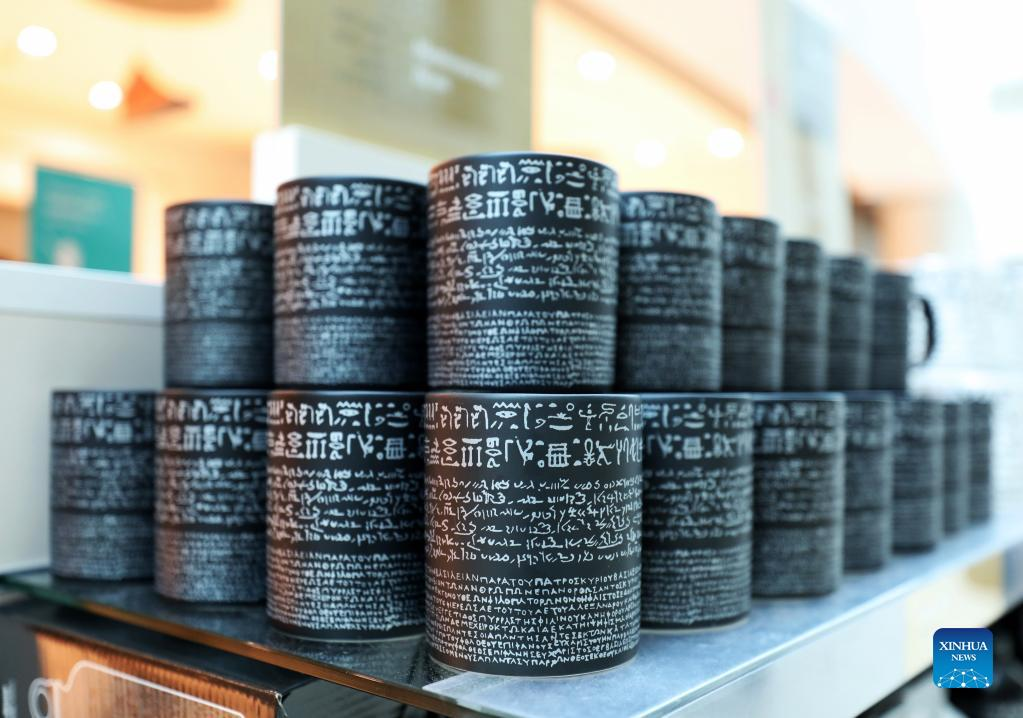
Photo taken on May 11, 2022 shows the Rosetta Stone mugs in the British Museum in London, Britain. The Rosetta Stone is one of the most famous objects in the British Museum. The Stone is a broken part of a bigger stone slab. It has a message carved into it, written in three types of writing. It was an important clue that helped experts learn to read Egyptian hieroglyphs (a writing system that used pictures as signs). (Xinhua/Li Ying)
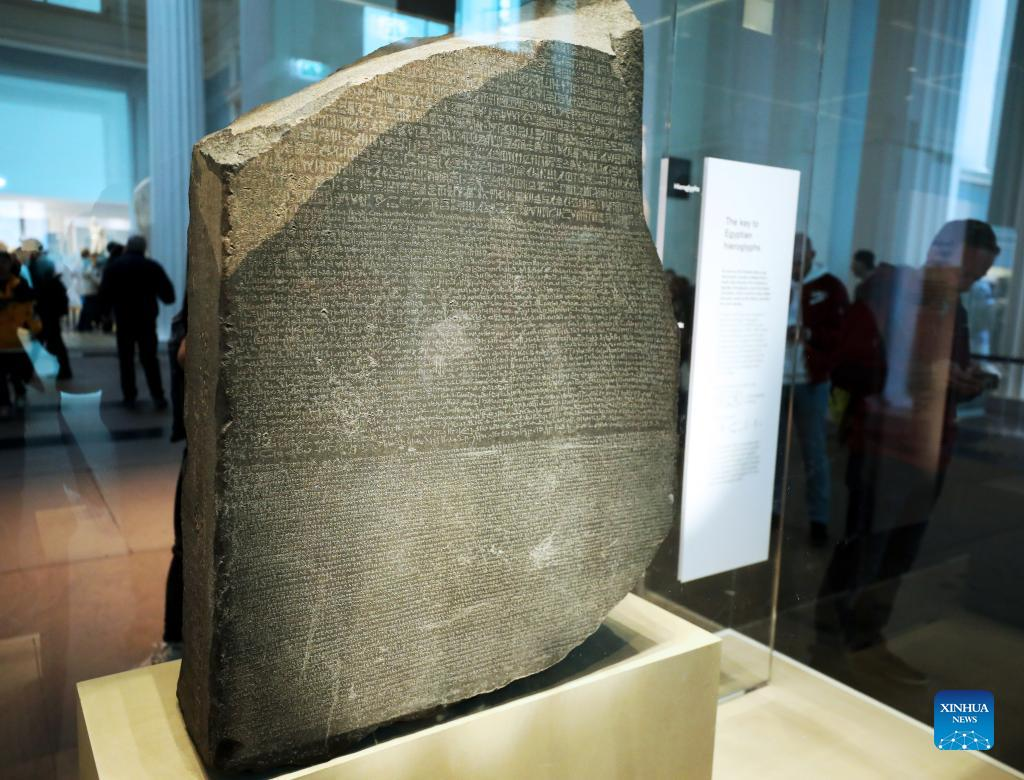
Photo taken on May 11, 2022 shows the Rosetta Stone in the British Museum in London, Britain. The Rosetta Stone is one of the most famous objects in the British Museum. The Stone is a broken part of a bigger stone slab. It has a message carved into it, written in three types of writing. It was an important clue that helped experts learn to read Egyptian hieroglyphs (a writing system that used pictures as signs). (Xinhua/Li Ying)

Photo taken on May 11, 2022 shows a book and replicas of the Lewis Chessmen in the British Museum in London, Britain. The Lewis Chessmen are among the most popular collections in the British Museum. Discovered on the Isle of Lewis of Scotland in 1831, the medieval chess pieces were made of walrus ivory. (Xinhua/Li Ying)
Photos
Related Stories
Copyright © 2022 People's Daily Online. All Rights Reserved.










